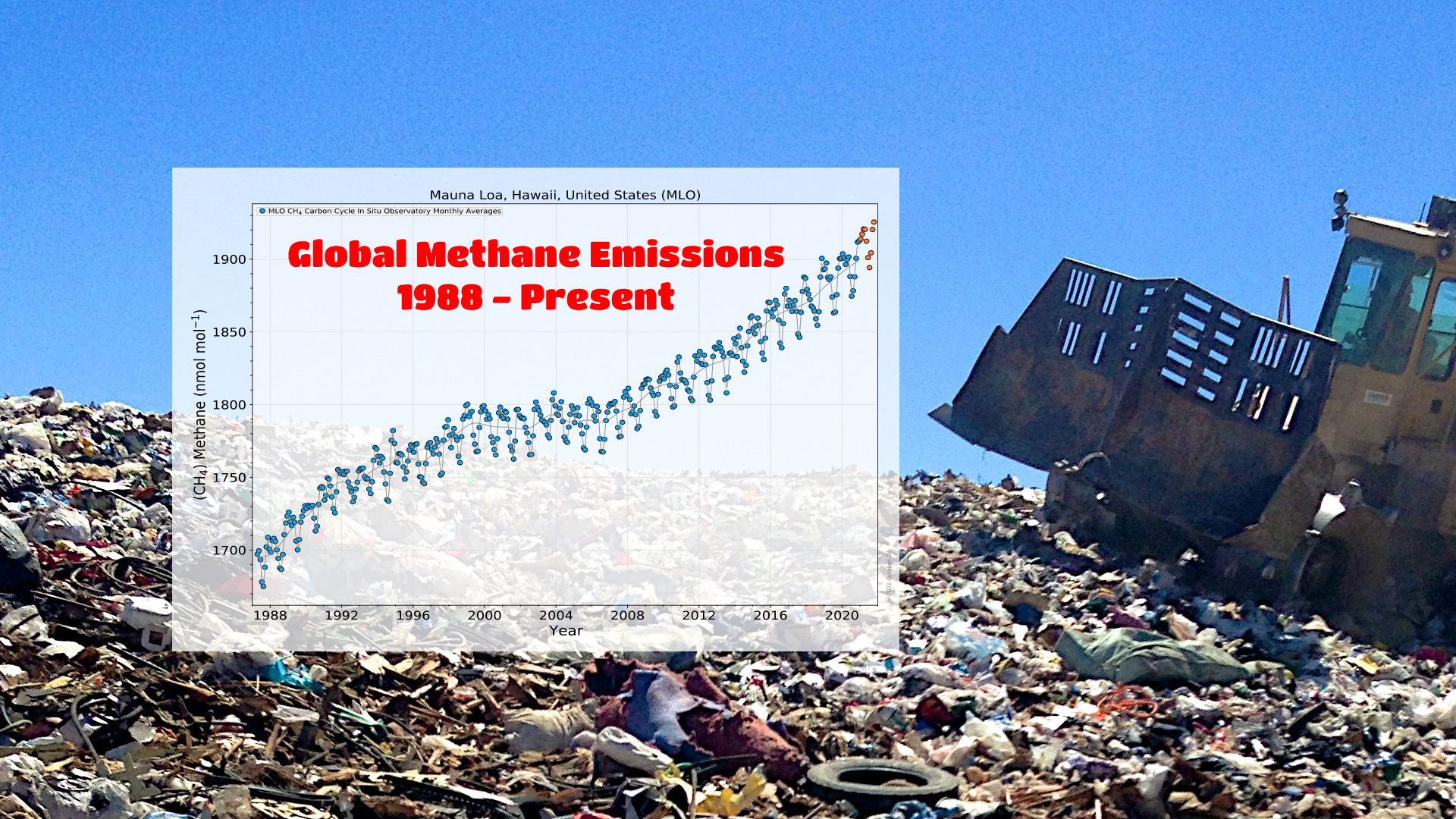Methane Emissions Reduction
What do we know? How do we reduce it?
Methane comes from multiple sources, both human-made and natural.
The featured image includes a graph showing a steady rise in global methane emissions from 1988 through the present day. We should be concerned because Methane is ten times more potent than Carbon Dioxide with regards to global warming and the greenhouse effect. The graph was supplied by NOAA here.1
Our landfills need to separate out compostable organics for one very good reason. There’s no oxygen at the bottom of the landfill. Some bacteria love to compost in this environment, but they produce a lot of methane as a result. Because methane is a gas, it seeps easily out of a conventional landfill and migrates into the atmosphere.
When we compost our organics separately in a place where oxygen is available, the end result is a bacterial community that produces more carbon dioxide instead. By separating out the compostables, we reduce the effective methane production, thus reducing global warming.
Methane Emissions Reduction
We now have fancy sky-borne infra-red spectroscopy to peer down on our land and oceans to determine where methane emissions are coming from. We can even pinpoint hot spots in existing gas infrastructure to help fix leaks. This sort of visualization allows us to pinpoint where methane is coming from in our cities and farms. We’re seeing that a lot of methane is coming from legacy landfills that may not yet mandate separation of compostable organics or are intentionally creating methane, but have not successfully captured the same methane for energy consumption. With the help of this new technology, we hope to show exactly where methane is coming from so we provide solutions that “plug the leak” and reduce methane emission.
1 To create the same graph and get a closer look, go to this URL, select “Methane” for the parameter, “In Situ” for data type and “monthly averages” for data frequency. Time span equals “all”. Then submit.
Photo Credit Featured Image: Alan Levine, PXHere

